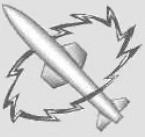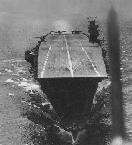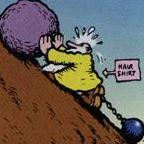Jeremy Pritchard
Posts: 588
Joined: 9/27/2001
From: Ontario Canada
Status: offline

|
Like was said above, the major shortcomings of Japanese aircraft was not training, speed, or manoverability, or climbing rates or dive rates but DURABILITY and FIREPOWER. In order to shoot down a F4F, P-40 or P-39 an A6M or Ki-43 has to get in a lot of hits because they are fairly poorly armed and their opponent is very durable. To shoot down a US fighter requires a lot of skill as they would probably not down the aircraft on the 1st run (especially with the Ki-43). However, once a US fighter gets its sites on a Japanese plane their opponent is usually toast after one burst.
It is sort of like the analogy of cops and robbers. (US = cops, Japanese = robbers, not litterally...). The US could be fooled by robbers countless times, yet still keep in operation, but once the robbers are caught by the cops just once, game over. Robbers can be much better then the cops, but just one slip up, and they are done. Cops can screw up a few times and still not necessarily have consequences.
A US pilot can afford to be hit a few times by a Japanese pilot and escape in fairly good condition, while a Japanese pilot gets hit once and their war is done.
This might be why the kill/loss ratios were the way that they were historically (not brilliant tactics or aircraft handling but the fact that US pilots can survive more hits then Japanese pilots).
The one thing that I beleive is wrong about aircraft statistics in UV (from what I have seen) is that some of the IJAAF and IJNAF aircrarft have too high durability. This might be why Allied losses are too high.
Going back to the old Pacific War game, which was stated (in an earlier thread) to have problems in aircraft ratings, the aircraft losses stated in the screens are extremely deceptive. It may look like the US are losing more aircraft then the Japanese in late 1942, early 1943, however, if you were to actually check aircraft groups (Japanese and Allied) afterward you will notice that most of the Allied planes deemed as DESTROYED are actually damaged, while virtually all Japanese planes deemed as DESTROYED are destroyed. Even in 1942 kill rates probably favour the Allies but is hidden when damaged and destroyed aircraft are combined into one number.
For example:
40 Ki-43 vs. 40 P-40 (equal experience)
6 Ki-43 Listed as Destroyed
14 P-40 Listed as Destroyed
However, chances are that 6 Ki-43 were destroyed, and only 1 or 2 P-40 were destroyed (9-8 damaged). This is because Ki-43 Dogfight is higher (this determines the hit value for cannon), but their cannon rating is only 4 (Compared to 24 durability for P-40).
To determine wether or not an aircraft hit is damaged the following formula is applied
If Random(100)<67 and Random Defender Durability is greater then Random Attacker Cannon it is damaged, otherwize it is destroyed.
So the chances for an allied aircraft to survive an attack of a Japanese aircraft is very good (High Durability vs. Low Cannon), and the survivability of Japanese aircraft is poor (Low Durability vs. High Cannon). In most cases, US Durability is greater then Japanese Cannon rates, but most US Cannon rates are close to Japanese Durability, and sometimes surpass them.
Before something is deemed historically innaccurate, giving the wrong results, you should really check to see if the results you are looking at in the game are the REAL results. The problem and reasons that I see might be the cause for decreased Japanese losses is that durability is too high.
|
 Printable Version
Printable Version













 New Messages
New Messages No New Messages
No New Messages Hot Topic w/ New Messages
Hot Topic w/ New Messages Hot Topic w/o New Messages
Hot Topic w/o New Messages Locked w/ New Messages
Locked w/ New Messages Locked w/o New Messages
Locked w/o New Messages Post New Thread
Post New Thread